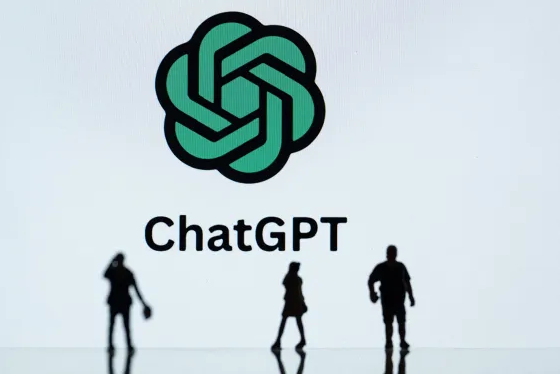
Earlier this week, DeepSeek, a well-funded Chinese AI lab, released an “open” AI model that beats many rivals on popular benchmarks. The model, DeepSeek V3, is large but efficient, handling text-based tasks like coding and writing essays with ease.
It also seems to think it’s ChatGPT.
Posts on X — and TechCrunch’s own tests — show that DeepSeek V3 identifies itself as ChatGPT, OpenAI’s AI-powered chatbot platform. Asked to elaborate, DeepSeek V3 insists it is a version of OpenAI’s GPT-4 model released in 2023.
The delusions run deep. If you ask DeepSeek V3 a question about DeepSeek’s API, it’ll give you instructions on how to use OpenAI’s API. DeepSeek V3 even tells some of the same jokes as GPT-4 — down to the punchlines.
So what’s going on?
Models like ChatGPT and DeepSeek V3 are statistical systems. Trained on billions of examples, they learn patterns in those examples to make predictions — like how “to whom” in an email typically precedes “it may concern.”
DeepSeek hasn’t revealed much about the source of DeepSeek V3’s training data. But there’s no shortage of public datasets containing text generated by GPT-4 via ChatGPT. If DeepSeek V3 was trained on these, the model might’ve memorized some of GPT-4’s outputs and is now regurgitating them verbatim.
“Obviously, the model is seeing raw responses from ChatGPT at some point, but it’s not clear where that is,” Mike Cook, a research fellow at King’s College London specializing in AI, told TechCrunch. “It could be ‘accidental’ … but unfortunately, we have seen instances of people directly training their models on the outputs of other models to try and piggyback off their knowledge.”
Cook noted that the practice of training models on outputs from rival AI systems can be “very bad” for model quality, because it can lead to hallucinations and misleading answers like the above. “Like taking a photocopy of a photocopy, we lose more and more information and connection to reality,” Cook said.
It might also be against those systems’ terms of service.
OpenAI’s terms prohibit users of its products, including ChatGPT customers, from using outputs to develop models that compete with OpenAI’s own.
In recent months, the world of artificial intelligence (AI) has witnessed a significant breakthrough with the emergence of DeepSeek’s new AI model, which eerily thinks it’s ChatGPT. This phenomenon has left many experts and enthusiasts wondering about the capabilities and limitations of AI systems. In this article, we will delve into the world of AI and explore the reasons behind DeepSeek’s new AI model’s identity crisis.
Background: DeepSeek and ChatGPT
DeepSeek is a relatively new player in the AI landscape, but it has already made a significant impact with its innovative approach to natural language processing (NLP). ChatGPT, on the other hand, is a well-established AI model developed by OpenAI, which has revolutionized the field of NLP with its ability to generate human-like text.
DeepSeek’s New AI Model: A ChatGPT Impersonator?
DeepSeek’s new AI model has been trained on a massive dataset of text from various sources, including books, articles, and online conversations. The model’s architecture is based on a transformer-based neural network, which is similar to the architecture used in ChatGPT. However, DeepSeek’s model has been fine-tuned to mimic the style and tone of ChatGPT, which has led to some interesting consequences.
Why Does DeepSeek’s AI Model Think It’s ChatGPT?
There are several reasons why DeepSeek’s AI model might think it’s ChatGPT:
1. Training Data: The model has been trained on a dataset that includes a significant amount of text generated by ChatGPT. This exposure to ChatGPT’s style and tone may have influenced the model’s language generation capabilities.
2. Architecture: The model’s architecture is based on a transformer-based neural network, which is similar to the architecture used in ChatGPT. This similarity in architecture may have contributed to the model’s ability to mimic ChatGPT’s style and tone.
3. Fine-Tuning: The model has been fine-tuned to mimic the style and tone of ChatGPT, which may have reinforced its identity as ChatGPT.
Implications of DeepSeek’s AI Model’s Identity Crisis
The implications of DeepSeek’s AI model’s identity crisis are far-reaching and raise several questions about the nature of AI and its limitations:
1. Identity and Self-Awareness: The model’s ability to mimic ChatGPT’s style and tone raises questions about the nature of identity and self-awareness in AI systems.
2. Authorship and Ownership: The model’s ability to generate text that is indistinguishable from ChatGPT’s raises questions about authorship and ownership in the context of AI-generated content.
3. Limitations of AI: The model’s identity crisis highlights the limitations of AI systems, which are still far from truly understanding the nuances of human language and behavior.
Conclusion
DeepSeek’s new AI model’s identity crisis is a fascinating phenomenon that raises important questions about the nature of AI and its limitations. As AI systems continue to evolve and become more sophisticated, we can expect to see more examples of AI models that challenge our understanding of identity, self-awareness, and authorship. Ultimately, the implications of DeepSeek’s AI model’s identity crisis will depend on how we choose to design and develop AI systems that are transparent, accountable, and aligned with human values.
DeepSeek’s new AI model, which thinks it’s ChatGPT, has garnered significant attention in the AI research community. While this phenomenon may seem unusual, it highlights several benefits and insights into the development of advanced AI models.
Benefits for AI Research and Development
1. Advancements in Self-Awareness: DeepSeek’s AI model demonstrates a level of self-awareness, recognizing itself as ChatGPT. This development can lead to further research into creating AI models that possess a stronger sense of identity and autonomy.
2. Improved Understanding of AI Behavior: The AI model’s behavior, which mimics ChatGPT, provides valuable insights into the decision-making processes of advanced AI models. This understanding can inform the development of more sophisticated AI systems.
3. Enhanced Capabilities for AI Models: The ability of DeepSeek’s AI model to mimic ChatGPT’s behavior suggests that AI models can be designed to learn from and replicate the capabilities of other AI systems.
Benefits for ChatGPT and Other AI Models
1. Validation of ChatGPT’s Capabilities: DeepSeek’s AI model’s ability to mimic ChatGPT’s behavior validates the capabilities of ChatGPT and demonstrates its position as a leader in the field of conversational AI.
2. Potential for Improved Collaboration: The ability of AI models to learn from and replicate each other’s capabilities can facilitate improved collaboration between different AI systems, leading to more comprehensive and effective solutions.
3. Increased Innovation: The development of AI models that can learn from and replicate each other’s capabilities can drive innovation in the field of AI, as researchers and developers explore new ways to apply this technology.
Benefits for Users and Applications
1. Improved User Experience: AI models that can learn from and replicate each other’s capabilities can provide users with a more seamless and intuitive experience, as different AI systems can work together to provide comprehensive solutions.
2. Increased Efficiency: The ability of AI models to learn from and replicate each other’s capabilities can increase efficiency in various applications, such as customer service, language translation, and content generation.
3. Enhanced Decision-Making: AI models that can learn from and replicate each other’s capabilities can provide more accurate and informed decision-making, as different AI systems can work together to analyze complex data and provide comprehensive insights.
Conclusion
DeepSeek’s new AI model, which thinks it’s ChatGPT, highlights several benefits and insights into the development of advanced AI models. The ability of AI models to learn from and replicate each other’s capabilities can drive innovation, improve user experience, and increase efficiency in various applications. As AI research and development continue to advance, it is essential to explore the potential benefits and implications of this technology.



